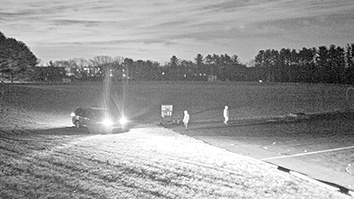Citation
Dusanter, S., Vimal, D., Stevens, P. S., Volkamer, R., and Molina, L. T.: Measurements of OH and HO2 concentrations during the MCMA-2006 field campaign – Part 1: Deployment of the Indiana University laser-induced fluorescence instrument, Atmos. Chem. Phys., 9, 1665–1685, https://doi.org/10.5194/acp-9-1665-2009, 2009.
Abstract
Measurements of tropospheric hydroxyl (OH) and hydroperoxy (HO2) radicals were made during the MCMA (Mexico City Metropolitan Area) field campaign as part of the MILAGRO (Megacity Initiative: Local and Global Research Observations) project during March 2006. These radicals were measured using a laser-induced fluorescence instrument developed at Indiana University. This new instrument takes advantage of the Fluorescence Assay by Gas Expansion technique (FAGE) together with direct excitation and detection of OH at 308 nm. HO2 is indirectly measured as OH by titration with NO inside the fluorescence cell. At this stage of development, IU-FAGE is capable of detecting 3.9×105 molecule/cm3 of both OH and HO2, with a signal to noise ratio of 1, an averaged laser power of 10-mW and an averaging time of 5-min. The calibration accuracies (1σ) are ±17% for OH and ±18% for HO2 using the water-vapor photolysis/O2 actinometry calibration technique.
OH and HO2 concentrations were successfully measured at an urban site in Mexico City, with observed concentrations comparable to those measured in other polluted environments. Enhanced levels of OH and HO2 radicals were observed on several days between 09:30–11:00 a.m. and suggest an intense photochemistry during morning hours that may be due to elevated sources of HOx (OH+HO2) and a fast cycling between the radicals under the high NOx (NO+NO2) conditions of the MCMA.


